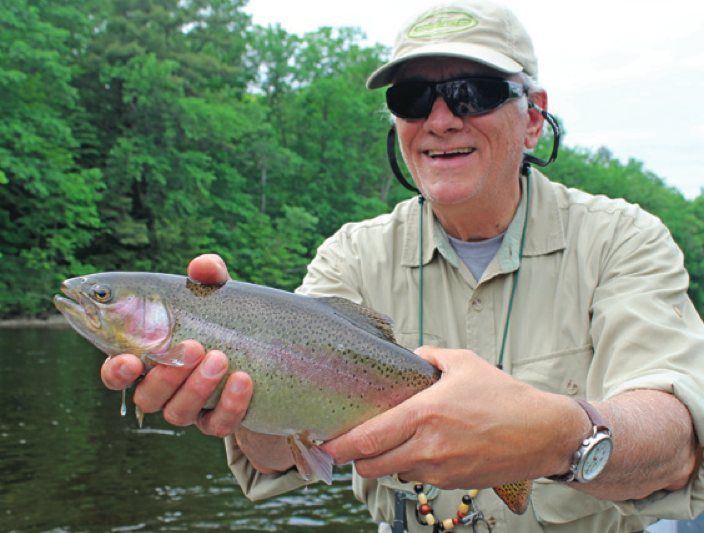A very unusual spring season has been followed by an equally odd onset of summer here in West Michigan. For several weeks, the calendar said one date, yet the river said another and they were about two to three weeks apart. Things have started to get back to normal, but still amidst some oddity from the trout fly angler’s perspective.
The fly angler has a few options for techniques, including dry flies, wet flies fished either indicator/nymphing style or swung both with/without sink tips, as well as streamers fished with sinking or sink tip lines. The streamer bite has been less than stellar, nymphing with indicator rigs is getting it done, but swinging wet flies has been the most productive method for simply getting fish on during the day. The larger trout are being caught in lower light conditions, on dry flies, during spinner falls.
The annual gray drake has come in a way I’ve not seen in my 20 years on the river. Instead of typical evening flights and spinner falls, we had near two weeks of all day flights and spinner falls. Not necessarily heavy, but they were taking place, and as a result, resident rainbow and brown trout were able to leisurely sip bugs all day long.
Other hatches of interest included #10 isonychia’s, #16 cinnamon caddis, and sulphurs, of which we have two different ones emerging on the Muskegon River, one being a #14, the other a #18. For the fly angler looking for surface action, these patterns fished as emergers, new adults and egg laying adults, have brought fish to the surface. Another caddis, an #18 green, will show itself soon to add to the buffet of bugs. Cloudy days will find some BWO’s coming off as well, from #18-22 in size.
Gear for pursuing trout on fly gear include rods ranging from 4-6 weight, 8-9+ feet in length and matched with the correct floating line. Leaders in the 9 foot length, tapered down to 4 or 5x (4-5# test) work best for dry flies. Indicator rigs include similar leader length and test, with droppers added with 5x tippet. Common sink tips for swinging wet flies attached to floating line via loop-to-loop connections, are 8-12 feet in length, with moderate sink rates, such as T-8 from the Rio company. Streamer rigs would be either a bit heavier sink “tip” (T-11) or 200-250 grain sinking lines.
The spin anglers are casting-retrieving small Rapala’s and spinners with fair success. Bottom bouncing worms is an option as well, but the word on the river is that the bite has been tough! I truly believe that with all the insects in the river that trout are feeding on THEIR schedule, which often differs from our schedules as anglers.
The coming weeks will see trout dry fly angling taper off as insects complete their cycle/emergence. The fly angler will switch to either nymphing rigs for trout, or swap out five weights for seven weights and start chasing smallmouth bass. That’s where most of July and August will find me, chasing smallies with both topwater poppers and subsurface streamers.
After our brutal winter and crazy spring, it looks like we’re in for some nice weather. I hope it finds your feet in the water and a bent rod in hand!
[easy-social-share]

